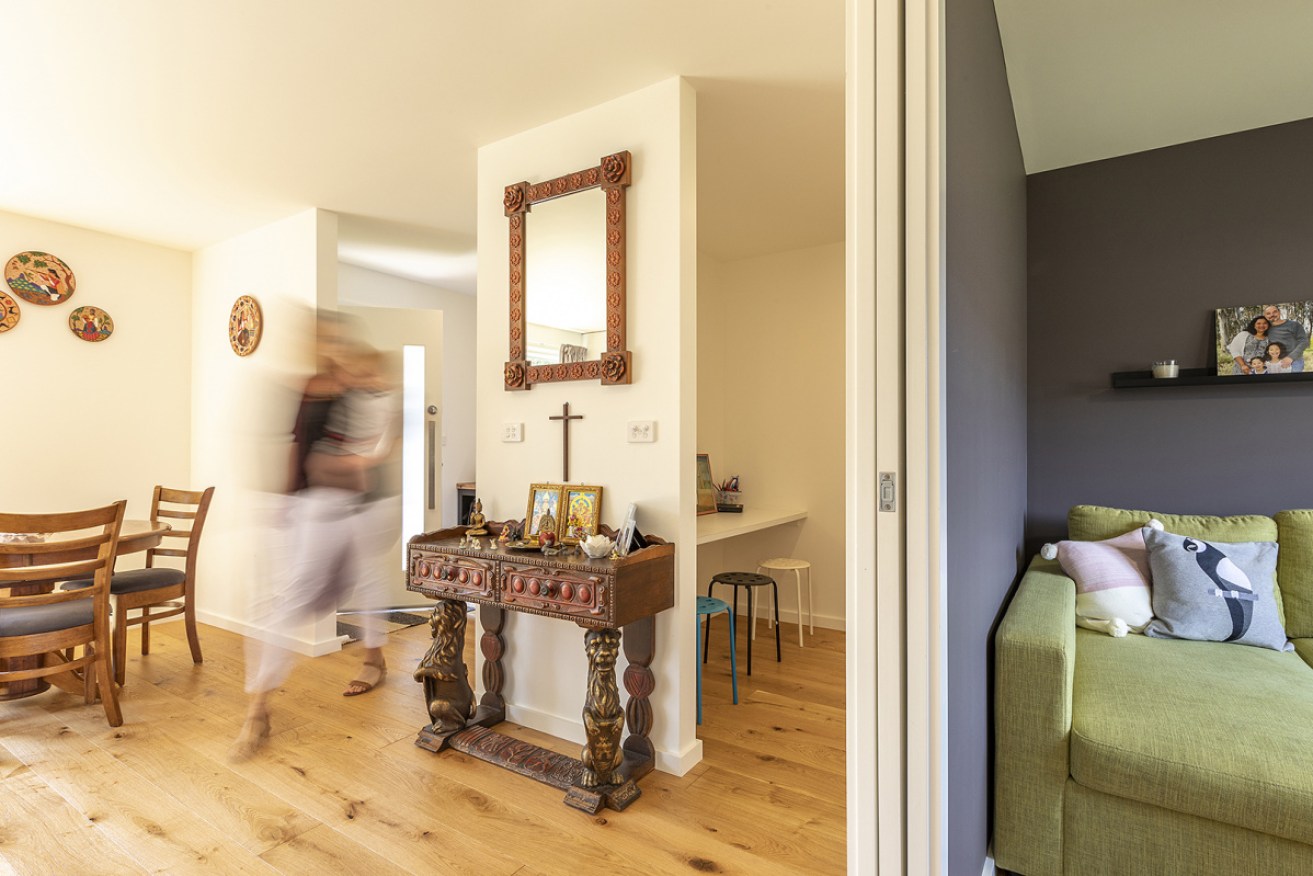How an energy-efficient renovation can help you save hundreds on bills


Sealing draughts around windows and doors could help slash hundreds off your yearly energy bill. Photo: Light House Team/Ben Wrigley
Australia’s scorching summer temperatures have many people cranking the air-conditioner at home to escape the heat.
Unfortunately, the comfort of a cool home comes with a price: A high power bill.
Sure, dropping the temperature another one or two degrees is easy in the moment, but it’s not always the most efficient or budget-friendly solution.
However, a leading sustainable building expert says making some “quick wins” around the home can lead to substantial savings.
CSIRO building simulation research lead Anthony Wright said a common blunder families make when retrofitting their home is focusing on “big ticket” items first, such as double glazing and new insulation.
As a result, they neglect more urgent needs, like fixing draughts and ensuring rooms are closed off by doors to regulate climate.

Transforming your household’s energy usage can be as simple as taking a trip to the hardware store. Photo: Big Small House, Palm Cove by POD (People Oriented Design)/Nic Granleese
“Looking at draught sealing your home is a really good place to start to combat the gaps and cracks under doors and around windows,” Mr Wright told The New Daily.
“You can buy these very simple seals at your local hardware store and they can make an enormous difference.”
Once households address those leaks, they can set about improving their ceiling insulation and window treatments – external blinds for houses that struggle to repel heat, while heavy drapes can help in winter.
And for families with larger budgets, double- or triple-glazing windows and swapping out energy-guzzling appliances and light fittings with a higher energy star rating alternative can help drag down electricity bills.
Mr Wright also encouraged renters to negotiate small-scale interventions with their landlords in the form of draught sealing and – for states with applicable schemes – accessing rebates to install solar panels.
Renovations push the savings to the max
Modernising a home can push the savings into the stratosphere.
Mr Wright said most homes built from the post-war period to the late-1980s were built with little thought for insulation, and an orientation that maximises sunlight in winter and shading for summer months.
Which is why, he says, the average Australian home is only rated 2.2 stars (out of 10) for energy efficiency.
But, if the average Sydney or Melbourne family renovated their home to hit 4.9 stars, they can save up to $480 per year.

Large windows can help make open up a room – but also open it up to extremes of the Australian climate. Photo: CSIRO
If they went the “whole hog” and upgraded their hot water system, air-conditioning and some appliances to boost their rating to six stars, that annual saving could increase to $900, he said.
By going further and installing solar panels, they could potentially offset their entire energy consumption.
But Mr Wright stressed that renovators should ensure they separate the newer rooms from older sections of the house to avoid cancelling out those benefits.
“It’s also worthwhile getting an energy rate involved early,” he said.
“It can seem like it costs, but it will pay back in comfort and energy bill savings in spades over time, as they can do a before-and-after rating, and also provide consultation on tweaking your renovation as you go.”
Hundreds saved despite ‘summer from hell’
CEO of Botanic Gardens Australia & New Zealand Eamonn Flanagan was a self-confessed sceptic before he enlisted Canberra-based sustainable firm Light House last year to retrofit his home.
Despite the home’s relative modernity, his guests described it as “a cave” due to its frigid conditions over winter – and he thought installing under-floor heating was the only solution.
After conducting draught testing through the home, the architecture firm suggested sealing gaps underneath doors (one gap was 22 millimetres wide) and behind appliances.

Light House has helped families retrofit their homes to drastically improve their energy efficiency without changing the footprint of their home. Photo: Light House Team/Ben Wrigley
Along with improved insulation around light fittings and new curtains, he estimates the overall cost of the retrofit came to $15,000.
And then came the “summer from hell”.
“We made these changes in November, and when people came around wearing masks, they couldn’t believe there was no smoke inside because they knew our house previously,” Mr Flanagan told The New Daily.
“And in terms of our air-conditioning bill, we had it on more last summer because it was so much hotter, but because our rooms were sealed, we had it on 24 degrees instead of 22 and for less time as the room would reach a comfortable temperature more quickly.”
Mr Flanagan estimates he saved $300 on every quarterly gas bill through winter despite working from home during the pandemic, while his electricity bills dropped by $150 last summer.
And he said while the changes carried a large upfront cost, they would eventually pay for themselves.
“I didn’t think we had big power usage, so I didn’t think we were going to be saving so much money,” Mr Flanagan said.
For more tips on energy-conscious renovation and retrofitting ideas, visit this CSIRO blog








